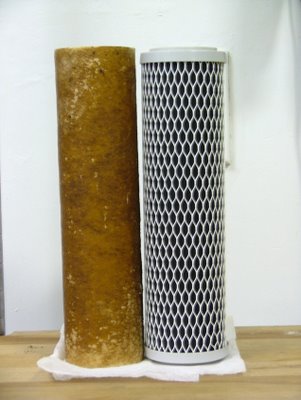Internet Pricing
I’m no pricing expert, but it seems to me that the world is waiting for someone to come up with a better internet retail model. At the moment, internet access in the average “coffee shop” seems to work in one of two ways: the high-priced service model, as at Starbucks, or the free-and-open model, as with chains like Così and other places, including many independent stores. As much as I appreciate free internet, neither model makes much sense. In fact, the free access approach isn’t even necessarily beneficial as a patron, since it can change customer behavior for the worse.
On the pay-for-use side, the Starbucks model is expensive, especially if you need just enough internet time to accomplish something meaningful, and not so much that it's a day’s investment. Starbucks has contracted the service out at AT&T, which in turn has an aggressive pricing model. I suppose they charge what the market can bear, but in all likelihood this just pushes users towards mobile devices that either have free access because of an existing corporate relationship (as with the iPhone at Starbucks, through AT&T) or use external systems (like the BlackBerry). And this is all fine and well—as long as a mobile device will do what you need at that moment.
On the other hand, the free-at-Così approach represents a lost opportunity. Customers can order a $3 coffee and stay for three or four hours, long after the coffee is gone but while the free internet is still working. Indeed, I have spent a fair amount of time at a nearby Così this summer [side note: get espresso drinks, avoid the brewed coffee] and have observed this behavior first hand. Moreover, at my local Così, the space is big enough that I have seen people eating food from other restaurants, unnoticed by staff, while using the internet. Hmm.
It would make a lot more sense to find the middle-ground of these two approaches: purchase-driven, time-based “token” access. Here’s how this would work: buy anything the store sells, get free internet access for up to an hour; your access code would be printed on your receipt. Want another hour? Buy something else: a cookie, another coffee, maybe even lunch; get another receipt and another hour of access. This would entail a logical recognition that coffee shops are not in the internet business, they are in the food-and-hospitality business. Providing internet access makes good sense from a hospitality perspective, so use it hospitably: as an incentive to food and beverage sales while also avoiding a world full of freeloaders. Moreover, stores could tweak this process during peak hours (like lunchtime), to reduce the available internet duration to a half-hour. That would encourage the hangers-on to hang-on for a reason, while making room for paying customers when someone is just mooching internet service.
Starbucks has sort-of moved to a better, scaled model, via it’s reward card, providing two hours of access per day if you make one purchase per month. There’s another trade-off in here, in the form of all the info you give to Starbucks via the card. But Starbucks also seems to have missed the point: by limiting the customer’s internet access, they’re just driving revenue to AT&T, while doing nothing to incentivize onsite purchases from Starbucks itself—because additional purchases won’t increase the amount of free internet time.
I’d be just as happy avoiding chain stores, but many of my local spots (like Georgia’s) don’t offer internet access at all, perhaps because they are concerned about the costs, or the perception that there’s not much benefit in having a bunch of freeloading internet users around. It’s a shame. Seems to me local cafe culture could really benefit from an overhaul in the pricing models, which would be good for business and good for the customer, too.
Labels: shopping, technology




